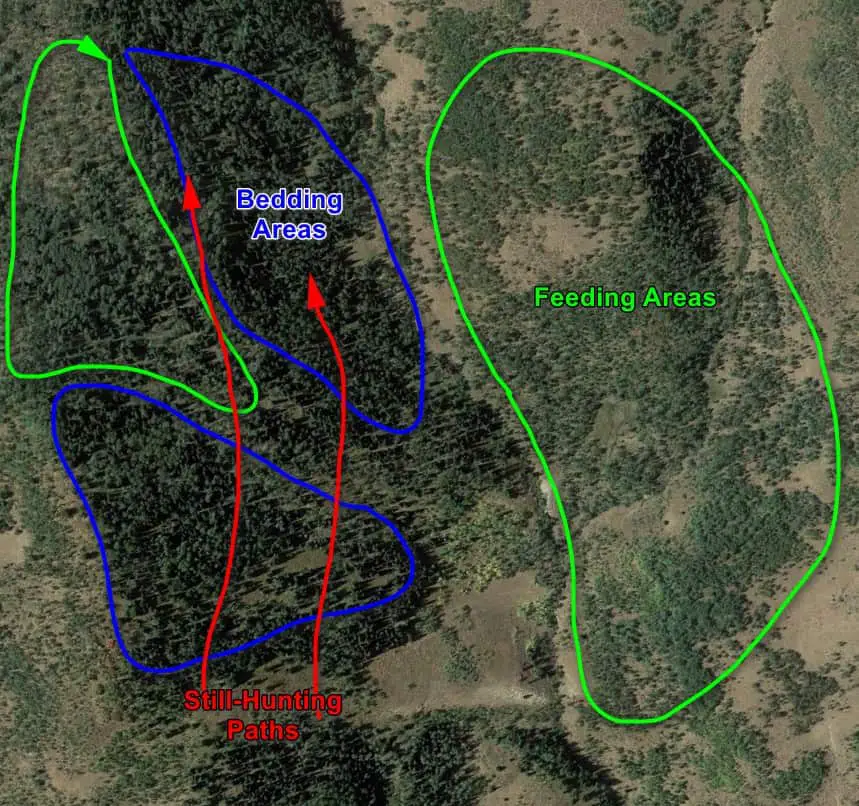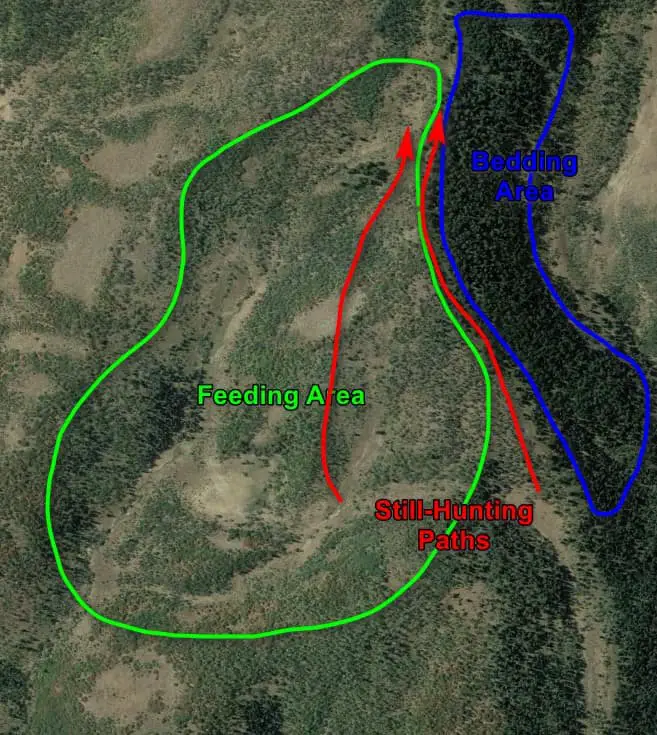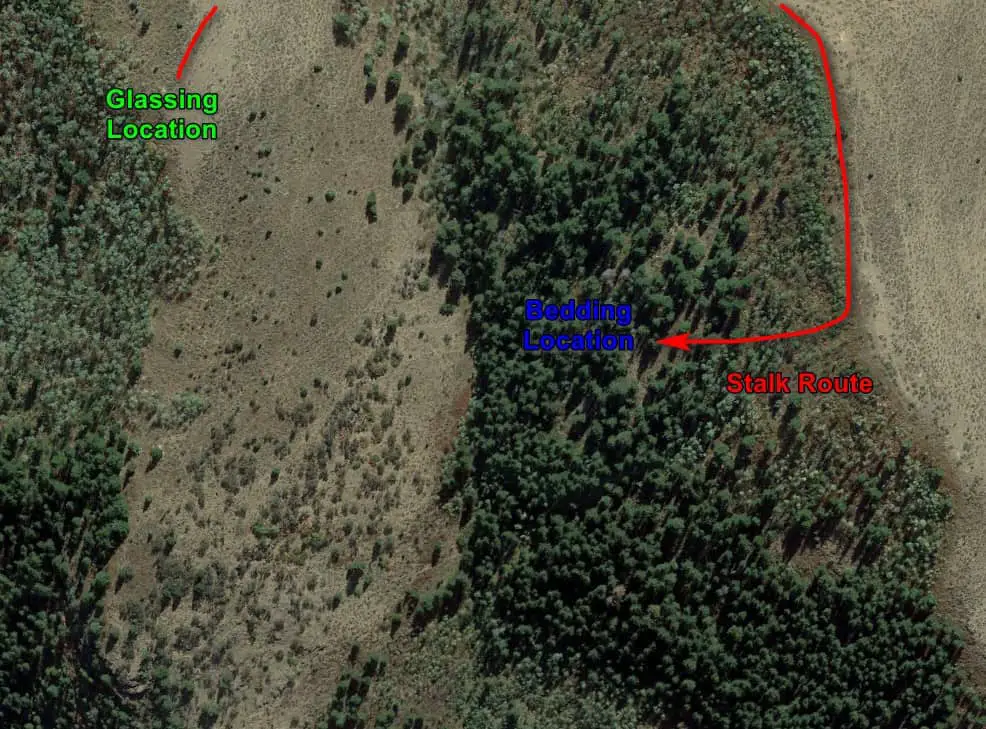Tags for hunting cow elk are usually easier to obtain than bull elk tags. While cow elk do not present the same opportunities for calling in screaming bulls, cow elk hunts are still exciting and can help you learn elk behavior and hunting tactics so you’ll have more experience when you finally draw that big bull tag. On top of that, you can fill your freezer with some high-quality meat.
When you’re trying to harvest a bull elk, cows often seem to be everywhere. However, harvesting a cow elk is far from a certain thing. Cows spend their entire lives in danger from predators and often have to evade predators when they’re pregnant or have a young calf in tow. This means they’re experts at recognizing potential danger, like hunters.
Most of what I learned about elk habitat and behavior came from archery hunting cow elk in the west. I started archery hunting cow elk because most western states offer more opportunities and longer seasons for archery hunters. I’ve implemented these same tactics while rifle hunting and the tactics apply to whichever long or short-range weapon you may hunt with.
The three most effective cow elk hunting tactics are still hunting, spot-and-stalk hunting, and stand hunting. Certain situations and terrains lend themselves better to one hunting tactic than another. As you consider elk behavior, time of year, terrain, and your personal preferences one of these tactics will help you find cow elk during any season.
Basic Elk Behavior
Understanding basic elk behavior is key to deciding which cow elk hunting tactic to use and how to use it. The basic daily pattern of elk movement is as follows (of course there are always exceptions).
In the early morning, elk are usually feeding. Once the sun crests the horizon and warms feeding areas elk will start moving to bedding areas where they will spend most of the day. In the evening, as shadows begin to fall over the feeding areas elk will move from bedding areas back to feeding areas.
Elk feeding areas include aspen stands, clear cuts, sagebrush flats, agricultural fields, and any other location desirable forage plants are growing. The best way to locate feeding areas is to spend time scouting in the morning and late evening when elk are most likely feeding in these areas.
Bedding areas are usually on shady, north-facing slopes. Elk prefer to bed in flatter areas (where the slope is less than 20 degrees) on north-facing slopes, but I have encountered many elk and elk-beds in very steep areas.
Locating potential feeding and bedding locations in your hunting area will give an idea of where the elk travel corridors are.
1. Still Hunting
Still hunting is the most effective way I have found to hunt elk with a bow. Still hunting is also a very effective elk hunting tactic when you are hunting thicker terrain (where glassing isn’t possible) with a rifle.
To still hunt for elk, move through an area where you expect the elk to be. You must move slowly enough that you spot the elk before they spot you. I find still hunting is very effective for elk because they are large animals that make some noise when they walk. That means I don’t have to worry about making a little noise because the elk are also making noise.
I find still hunting for elk to be so effective because elk move around from day to day. While they stay in the same general location they may feed in one aspen stand today and a different one tomorrow. This makes it difficult to know exactly where to be. With still hunting you can move through the areas elk are most likely to be, which I think gives you a better chance at intercepting them on any given day without investing hours of scouting time.
The key to effective still hunting is knowing where the bedding areas are. Cow elk will move from feeding to bedding areas in the morning after the sun comes up. A cow elk may not use the same bed day after day, but they often bed on the same slopes.
To have the best chance at intercepting cow elk moving from feeding to bedding areas, I like to still hunt the transitions.
I’ll often start at a location where I can glass a feeding area. If I see elk feeding I’ll try to anticipate where they might bed, then position myself between where they are and the potential bedding location and slowly move toward them.
Following this strategy, there have been several times I’ve walked right into cow elk moving toward the bedding area.

If I can’t locate any feeding elk I will try to determine which feedings areas they might be using that I can’t see from my location. Then determine which bedding areas they might travel towards. Then I’ll work my way along the transition between the feeding and bedding area in hopes of intercepting the elk.
As I move along the transition areas I also cow and calf call occasionally. If there are elk in the area and they hear my movements I think this helps them think I’m just another elk.
One morning, I hadn’t had any luck and was moving along the edge of a bedding area on the way back to my truck. I was cow-calling occasionally. Suddenly I caught movement to my left and a cow elk was walking right towards me. She made it to 15 yards before she caught my wind and bolted.

Perhaps the best reason I like still hunting for cow elk is that even if you don’t see elk you will cover some country and learn more about elk behavior as you observe elk sign (or lack of it). Even if you start hunting in an area with little or no elk sign you will be able to identify lack of elk use and try another area for the next part of your hunt.
Still hunting works best in locations where you have some cover as you move. If elk are spending their time in open grasslands and bedding under a few lone trees, you will have a hard time still hunting. This is where spot-and-stalk hunting can be effective.
2. Spot and Stalk
Spot-and-stalk hunting is my favorite way to hunt cow elk with a rifle, but it can also be effective for archery (and another short-range weapon) hunters.
In spot-and-stalk hunting, the hunter finds a vantage point where he can use his eyes and optics to locate elk. Once he locates elk, the hunter plans a route to intercept them and moves into shooting range. Often, you may even spot elk within shooting range, eliminating the need for a stalk.
This method of hunting is very effective because you can cover a lot of country without hiking many miles. The downside is that you have be hunting an area where elk feed in open areas. In many locations this is not a problem, but there are other locations where thick tree cover makes spot-and-stalk hunting much more challenging.
Your spot-and-stalk hunt will be most successful if you invest some time to locate the best vantage points. Look for locations on points and ridges that allow you to see multiple feeding areas and travel corridors, even if they are out of shooting range. You want to be able to see enough country that you can either see some elk or have confidence they’re not in the area so you can try another spot that evening or the next morning.
Realize that you may have to make a stalk of a mile or more to get into shooting position once you spot an elk.
My first close encounter with an elk came in a spot-and-stalk situation while I was archery hunting. I was glassing into an area where I had observed elk bed before when I spotted a couple of bedded elk. It looked like they were content and would be there for a little while.
The wind was blowing uphill, so I circled around the top of the draw they were bedded in. Then I slowly worked my way toward their location. As I got closer to where I had last seen them I moved more slowly and used my eyes to try to relocate the elk.
Just when I thought I wouldn’t be able to find them, I heard rustling down the hill. I thought it must be the elk, so I continued moving in that direction. A few yards farther and I spotted a bedded bull just 40 yards away. Unfortunately, I only had a tag for a cow elk. Then I heard a movement to my left. Through a thick patch of chokecherry, I saw the tan hide of an elk just a few yards away.
I was still in sight of the bull, but I moved slowly to knock an arrow, hoping he wouldn’t see. Just I had the arrow knocked, it fell off the rest and made a loud ‘click’ against the bow’s riser. The bull stood up and made an alarm bark. The elk hide in the chokecherry bushes moved and there was suddenly a cow elk standing broadside, 15 yards away. I drew back, but in all the excitement I hadn’t put the arrow back on the rest.
As I tried to frantically push the arrow into place the cow ran off.

3. Stand Hunting
To stand hunt for cow elk, locate a place that they frequent and set up a treestand or blind to ambush them when they come through. Stand hunting can be very effective in locations where there is a limiting resource (like water or food) or where the terrain (or other factors) forces elk to travel through a particular place regularly.
I’ve spent a little time stand hunting for cow elk near water holes and wallows. Many hunters enjoy success year after year from a well-placed stand. While it may seem like an easy way to fill a tag, do not be deceived. Identifying places that elk consistently occupy requires a lot of scouting time. Even then, there is no guarantee elk will appear every day. You may need to wait in the same stand for several days to get a shot.
Stand hunting is a very effective method, but it requires a lot of groundwork, discipline, and patience.
A Word of Encouragement
I went into my first few seasons of cow elk hunting thinking that it should be easy to harvest a cow elk. It is not. If at first you don’t fill your tag or find elk, don’t get discouraged. I’ve been there myself. Keep hunting. Spend time scouting. Look for scat, tracks, trails, and rubs to identify the areas elk are feeding and bedding. If you keep after it you will learn more about elk behavior in the area you hunt and you will have elk encounters.

